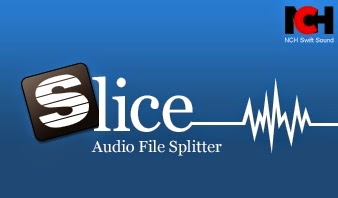Throughout this blog, we have seen multiple methods for expanding the audio/video ministry within the local church. Today, we will be looking at the importance of this ministry through the eyes of the pastor. For this interview, we specifically chose Pastor Chad Prigge of Fellowship Baptist Church in Watertown, WI for his love for the ministry and his interest in technology.
What value do you place on the audio/video ministry at your church?
The A/V ministry is important for any church seeking to expand its influence by getting out its message, an opportunity that is ripe for our media-saturated society.It is also important as it seeks to ensure a pleasant, non-distracting listening experience for those attending the services.
How large is this ministry within your church?
In terms of our annual operating budget, our a/v ministry is not very large. In terms of equipment, we have several wireless and hard-wired microphones, a video camera, an analog soundboard that will soon be replaced by a digital board, two recently installed monitor speakers above the platform, and a couple of computers to process the recordings.How many individuals are involved in this ministry for a morning service? Evening service? Mid-weekservice? What is each one doing?
There is usually one volunteer overseeing the audio during our church services. We no longer video record our services for broadcast on local cable tv.We recently had several seminary students preach in church for a class requirement. The requirement included that the sermons be video recorded and then uploaded to the internet. One of our members operated the video camera and another uploaded the sermons.
What do you see as its primary purpose or goal?
First, as already mentioned, the audio ministry exists in order to ensure a pleasant, non-distracting listening experience for those attending the services. Since faith is the result of hearing God’s Word (Romans 10:17), it is imperative that everyone who comes to church be given the opportunity to hear clearly what God is trying to say to them.What services does this ministry provide to the members?
One of the greatest benefits of our a/v ministry to church members, especially members who are physically unable to attend church, is recording and distributing the sermons or lessons to them. The sermons are available for download from our church website, or they can be transferred to a disk and distributed upon request.Does this ministry give your church more or less outreach opportunities? Why or why not?
We recently decided to discontinue recording and broadcasting our Sunday morning service on local cable tv for two reasons: it was becoming too great of a time commitment for our volunteer staff, and there were no significant measurable results from it. We concluded the program was making very little impact in our community. A likely reason is that the low quality of the program made it unattractive to the average viewer.I believe a church’s media presentation must conform to the personality of the church if it is going to be effective. We struggled to do this well.
What do you see as the Biblical basis for the audio/video ministry?
Romans 10:17 emphasizes the importance of hearing God’s Word which has the power to convert souls and change lives. The fulfilling of the Great Commission to the church hinges on the communication of truth. We should use every resource available to aid and enhance that communication.What might be some areas that you might expand this ministry in the future?
We hope to purchase a digital soundboard to replace the current analog in the near future. In addition, we have discussed the benefit of installing large tv screens on either side of the platform in order to broadcast the text of various musical numbers (e.g. instrumental offertories, unfamiliar choral texts, etc.) and possibly the significant points of sermons.What advice do you have for someone wishing to expand their audio/video ministry?
It is important to evaluate and take inventory of your a/v equipment regularly to see what technologies may be growing obsolete or to discover any technology gaps that should be addressed.What final thoughts would you like to share?
We should strive for excellence in every aspect of ministry. This is especially important in the area of a church’s A/V production. It is better to produce no medium than to produce one that misrepresents or detracts from the reputation of our most excellent God.Conclusion
Thank you, Pastor Prigge, for your willingness to let us interview you. We greatly appreciate the time that you were willing to invest so that we might gain a better understanding of how the pastor views this vital ministry.You can visit Fellowship Baptist Church at: http://www.fbcwttn.org/
In this interview, we saw several additional areas in which a media ministry could expand. In addition to these, what might be some more? How might we go about expanding in that area?
You can respond via the comments section below. Also, feel free to comment on other topics as well!
Have you checked out all our previous posts? Be sure to check them out below!
- http://maximizingmediaministries.blogspot.com/2015/04/looking-ahead-future-developments-for-the-media-ministry.html
- http://maximizingmediaministries.blogspot.com/2015/04/physical-and-virtual-various-outlets-for-audio-distribution.html
- http://maximizingmediaministries.blogspot.com/2015/04/a-necessary-component-for-live-streaming-audio.html
- http://maximizingmediaministries.blogspot.com/2015/04/how-to-legally-broadcast-and-record-copyrighted-music.html
- http://maximizingmediaministries.blogspot.com/2015/04/copyright-regulations-and-audio-video-distribution-within-the-local-church.html
- http://maximizingmediaministries.blogspot.com/2015/04/a-photo-illustration-of-live-streaming.html
- http://maximizingmediaministries.blogspot.com/2015/04/interviewing-audio-video-specialist.html
- http://maximizingmediaministries.blogspot.com/2015/04/maximizing-media-through-live-streaming.html
























